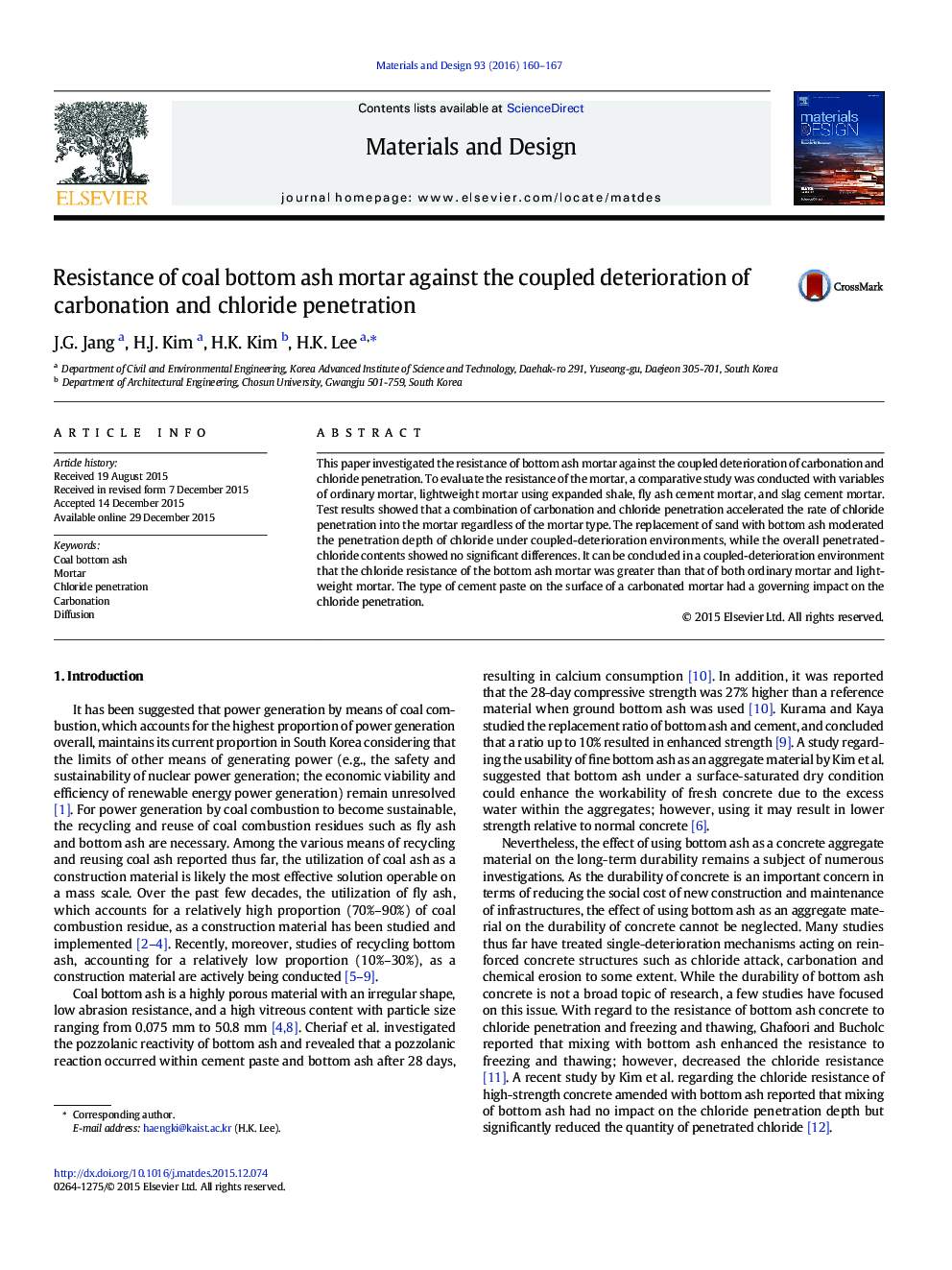| Article ID | Journal | Published Year | Pages | File Type |
|---|---|---|---|---|
| 828170 | Materials & Design | 2016 | 8 Pages |
•Carbonation accelerated the chloride (Cl−) penetration into bottom ash mortar.•Use of bottom ash moderated Cl− penetration depth under carbonation environment.•Type of binder had a governing impact on the Cl− penetration rather than aggregates.•Impact of bottom ash on the total Cl− penetration content was unclear.
This paper investigated the resistance of bottom ash mortar against the coupled deterioration of carbonation and chloride penetration. To evaluate the resistance of the mortar, a comparative study was conducted with variables of ordinary mortar, lightweight mortar using expanded shale, fly ash cement mortar, and slag cement mortar. Test results showed that a combination of carbonation and chloride penetration accelerated the rate of chloride penetration into the mortar regardless of the mortar type. The replacement of sand with bottom ash moderated the penetration depth of chloride under coupled-deterioration environments, while the overall penetrated-chloride contents showed no significant differences. It can be concluded in a coupled-deterioration environment that the chloride resistance of the bottom ash mortar was greater than that of both ordinary mortar and lightweight mortar. The type of cement paste on the surface of a carbonated mortar had a governing impact on the chloride penetration.
Graphical abstractFigure optionsDownload full-size imageDownload as PowerPoint slide
